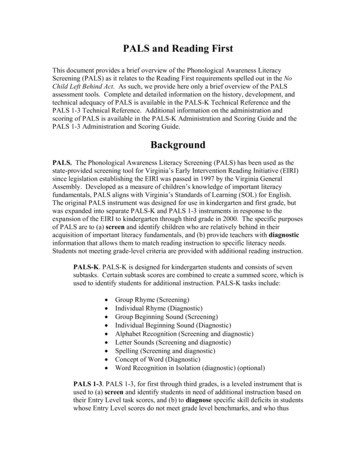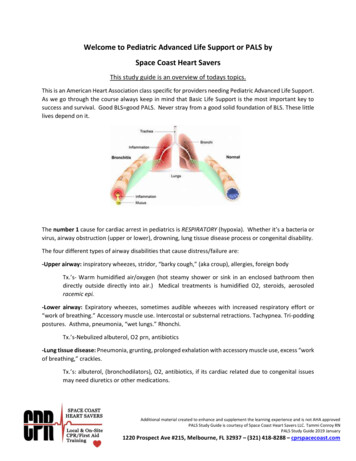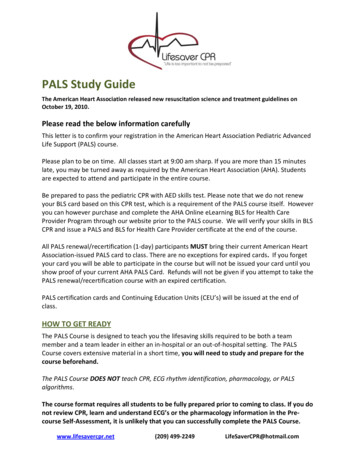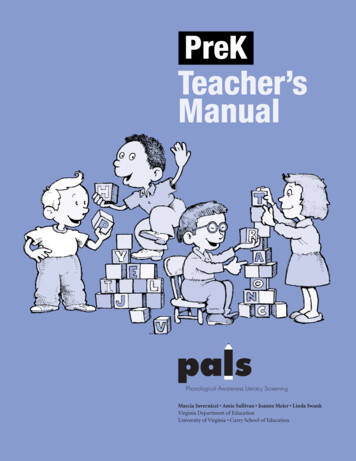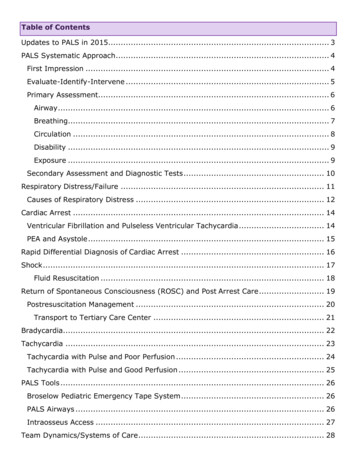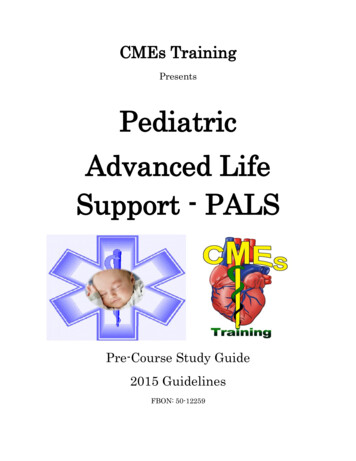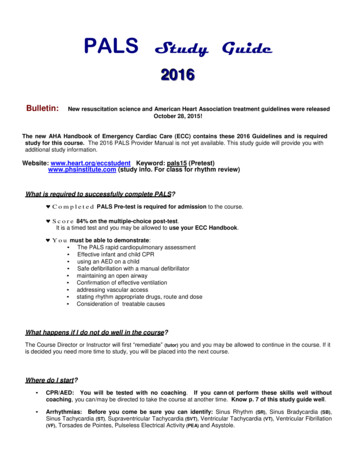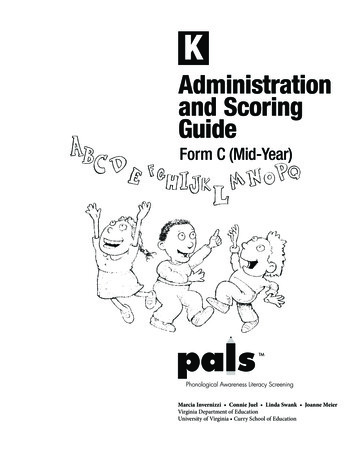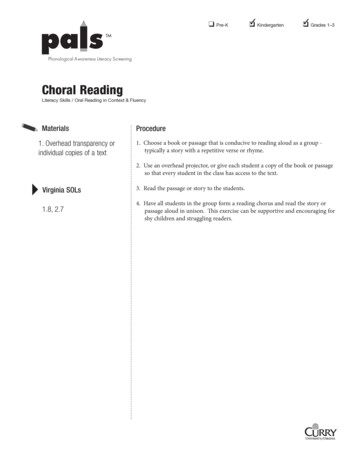
Transcription
q Pre-Kq Kindergartenq Grades 1–3Choral ReadingLiteracy Skills / Oral Reading in Context & FluencyMaterials1. Overhead transparency orindividual copies of a textProcedure1. Choose a book or passage that is conducive to reading aloud as a group typically a story with a repetitive verse or rhyme.2. Use an overhead projector, or give each student a copy of the book or passageso that every student in the class has access to the text.Virginia SOLs3. Read the passage or story to the students.1.8, 2.74. Have all students in the group form a reading chorus and read the story orpassage aloud in unison. This exercise can be supportive and encouraging forshy children and struggling readers.
q Pre-Kq Kindergartenq Grades 1–3Paired ReadingLiteracy Skills / Oral Reading in Context & FluencyMaterialsProcedure1. One struggling readerand one proficientreader1. Sit the two students side by side.2. Two copies of aninteresting readingVirginia SOLs2. Give each student a copy of the passage and ask them to read together.3. When the proficient reader reads, s/he acts as a fluency model. When the lessproficient reader reads, the other student is there to provide support.4. The pairs should be created thoughtfully, with not too great a distancebetween the students’ levels.5. Keep the pairs together for several weeks before creating new pairs.1.8, 2.7Source: Invernizzi, M., Meier, J., & Juel, C. (2000). PALS: Phonological Awareness Literacy Screening 1-3. Charlottesville,VA: University Press, 78.
q Pre-Kq Kindergartenq Grades 1–3Phonics PhonesLiteracy Skills / Oral Reading in Context & FluencyMaterialsProcedure1. PVC Pipes1. Use PVC pipe corners for students to practice reading familiar texts aloud,thus improving their fluency. By whispering into the pipe, the student’s voiceis amplified into their ear.Virginia SOLs1.8, 2.7
q Pre-Kq Kindergartenq Grades 1–3Poetry ClubLiteracy Skills / Oral Reading in Context & FluencyMaterialsProcedure1. Various poetry books1. Read aloud several poems to your students and display poetry booksthroughout the classroom.Virginia SOLs1.8, 2.72. Give students time to look through the books and select a poem to read tothe class. Allow students plenty of time to practice the poem and experimentwith different ways of reading it.3. Students can select a poem on Monday, practice it over the course of theweek, and read aloud during Poetry Club on Friday. Post a Poetry Club signup sheet where students can choose a time to share their poem.4. Gather the students during Poetry Club time. Students may include why theychose the poem.
q Pre-Kq Kindergartenq Grades 1–3Radio ReadingLiteracy Skills / Oral Reading in Context & FluencyMaterialsProcedure1. Narrative or expositorypassage1. Discuss the content and style of a radio broadcast, emphasizing theimportance of listening comprehension and communicating a clear message.You may wish to share a historic broadcast with students and/or find imagesof children listening to the radio prior to television. Explain that radio, likereading, requires you to use your imagination and visualize images. You maywish to bring in examples of radios today.2. Small group of students3. Objects that providechildren with a historicalcontext for radioVirginia SOLs2. Distribute the passage and assign a part to each student.3. Allow students time to practice their part - individually or with a partner.4. Perform the passage with students reading their assigned parts. There is noneed for props or costumes, since this is “radio”.1.8, 2.7Source: Invernizzi, M., Meier, J., & Juel, C. (2000). PALS: Phonological Awareness Literacy Screening 1-3. Charlottesville,VA: University Press, 78.
q Pre-Kq Kindergartenq Grades 1–3Read AroundLiteracy Skills / Oral Reading in Context & FluencyMaterialsProcedure1. Books, magazines, comics,etc. familiar to students1. Ask students to look through something they have already read to find afavorite sentence or paragraph.2. Post-It notes2. Using Post-It notes, students mark the passage. Allow students enough timeto practice reading their passage silently or aloud.Virginia SOLs1.8, 2.73. A student volunteer to reads his/her passage while the other students listen.Instead of calling on students, allow each student to continue the readingwith his/her passage as soon as another student finishes. Continue until everystudent has had a chance to read.4. After the read around, have students share why they chose their passage.
q Pre-Kq Kindergartenq Grades 1–3Readers TheatreLiteracy Skills / Oral Reading in Context & FluencyMaterialsProcedure1. Books or reading passagesfor students to read1. Select a text that is appropriate for grade level and lends itself to beingread aloud by multiple students. Typically, readers theatre should use anindependent text.2. Briefly describe/review the story. Work with students to pick appropriateroles.Virginia SOLs1.8, 2.73. Students practice reading the script independently (and at home).4. Explain to students that gestures, props, and movement are not used inReaders Theatre. Instead, the focus is to use one’s voice, emotion, andexpression.5. Students practice as a group.6. When the students are ready, have them perform the story for theirclassmates.
q Pre-Kq Kindergartenq Grades 1–3Recorded TextLiteracy Skills / Oral Reading in Context & FluencyMaterialsProcedure1. Tape player withheadphones1. Record the selected story, indicating when to turn the page.2. Audiotape3. Books or poems appropriatefor reading level4. MicrophoneVirginia SOLs1.8, 2.72. Show students how to read along in the book as they listen to the tape.3. If you have access to double headphones, two students can listen to and read astory together. Students may benefit from taking the tape and book home foradditional practice4. Students may also record themselves reading a story aloud. It is helpful andexciting for students to hear themselves reading. They can re-record untilthey are pleased with a final reading.5. VARIATION: There are a number of software programs that allow students torecord their reading on the computer.
q Pre-Kq Kindergartenq Grades 1–3Running RecordLiteracy Skills / Oral Reading in Context & FluencyMaterialsProcedure1. Running Record formThere are two purposes for using a running record: (1) to determine if thematerial that the student is reading is on an appropriate level, and (2) to see whatstrategies the student is using to determine unknown words.2. Text for student to readVirginia SOLs1.8, 2.71. Select a text that you believe is at the student’s instructional level. As thestudent reads, record his/her performance using either a typed copy ofthe text or a 100 Word Chart. The Oral Reading in Context QuickCheckincludes a great 100 Word Chart template. Use Running Record conventionswhen scoring. You may find Running Record conventions in the PALS 1-3Administration and Scoring Guide on page 19.2. After scoring the running record, calculate the percentage of errors bycounting the number of errors and subtracting from 100. This is the student’spercentage of accuracy.3. Determine the student’s instructional level using the chart below.For text above the Preprimer LevelIndependent98% or aboveInstructional90-97%Independent85-90%Source: Adapted by H. Partridge from: Gunning, T. G. (1998). Assessing and correcting readingand writing difficulties. Boston: Allyn and Bacon.
q Pre-Kq Kindergartenq Grades 1–3Timed Repeated ReadingLiteracy Skills / Oral Reading in Context & FluencyMaterialsProcedure1. Timed Repeated Readingchart1. Select an easy passage of approximately 100 words.2. Passage from independentlevel or familiar text2. The child reads aloud a selection while the teacher records the time. Thestudent’s first or second reading of the passage is to be used as a baseline tochart improvement with each reading.3. There are many ways to conduct a Timed Repeated Reading:3. Stopwatch or clockVirginia SOLs1.8, 2.7One minute reading - The student reads for 1 minute. The teacher or partnercounts the number of words read during each trial.Timed Reading - The student reads the same passage each time. The teacheror partner counts how many seconds it took to read the same passage.Words per minute - Choose a passage. Time the student when s/he reads thepassage. To determine WPM, use the total number of words in the passageand multiply this by 60. Take this total and divide by the total number ofseconds it took the child to read the passage.4. The Oral Reading in Context QuickCheck is a great template for recordingthe student’s progress. Children are motivated by and often enjoy personallycharting their progress.Source: Johnston, F. R., Invernizzi, M., Juel, C. (1998). Book buddies: Guidelines for volunteer tutors of emergent andearly readers. New York: The Guidford Press.
1. Timed Repeated Reading chart 2. Passage from independent level or familiar text 3. Stopwatch or clock 1. Select an easy passage of approximately 100 words. 2. The child reads aloud a selection while the teacher records the time. The student’s first or second reading of the passage is to
